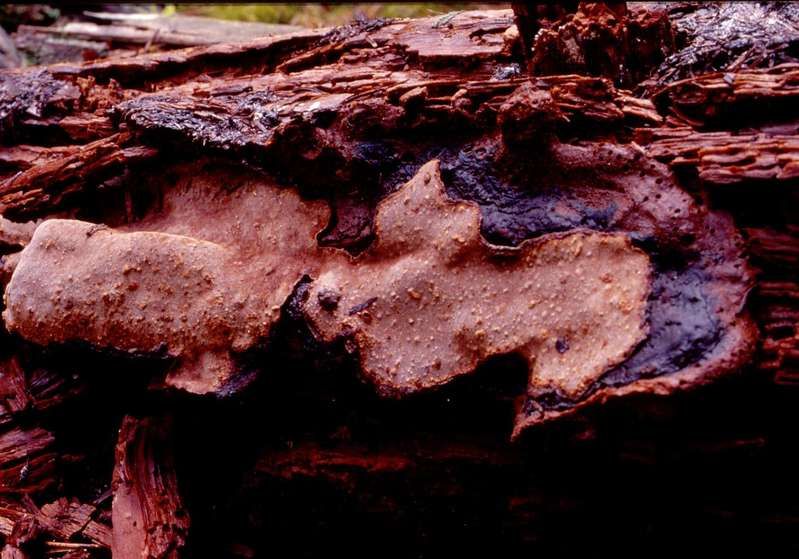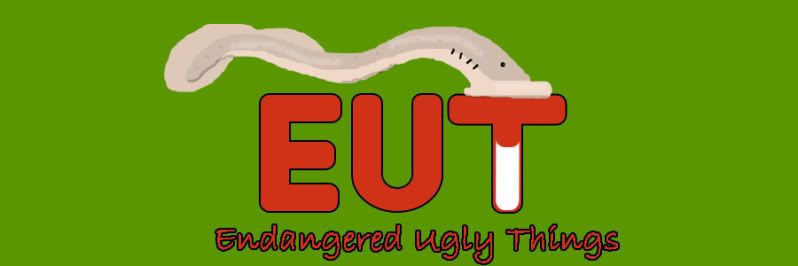 |
| Image from Swefungi.se |
Many people fail to think about the fact that rotting logs don’t just fall apart on their own; they need help2. Thus is the job of Phellinus nigrolimitatus, which has no common name, other than a wood-decay fungus. It lives in the deep temporal forests across the Northern Hemisphere, and essentially having the same interactions with a tree there as vultures in Africa have with the zebras. The fungus kills nothing, just feasts on the remains, allowing nutrients to be passed back into the soil.
While I have had problems finding information about species in the past, this fungus yields a different issue, similar to the problem I had with the Sagalla Caecilian. There is information out there about P. nigrolimitatus, but it’s all in scientific journals. It’s amazing how convenient ARKive’s format is: listing what it is, where it’s found, why it’s endangered, with a big picture on top. But, since the information is out there, I don’t want to shy away from writing about it just because I’m lazy (or don't speak Swedish or Norwegian).
Its diet consists mainly of old (well, dead) Spruces, as well as a few Pine species. I’m not exactly sure how it spreads from tree to tree, but it likely has airborne spores that are scattered throughout the forest in hopes of landing on a beautiful, rotting tree carcass.
While P. nigrolimitatus may be found around the world, it is only listed in Norway and Sweden. This means one of two things: either Norway and Sweden have specific problems with the fungus, or the entire Northern Hemisphere does, and only those two countries recognize it. The problem, according to many articles, is the fact that these fungi are really only found in very dense, unmanaged forests, where tree corpses are littered throughout. In managed forests, with a low number of huge, dead trees, it is that much more difficult for the spores to find their way to a suitable habitat.
The biggest conservation effort in place for the fungus seems to be the fact that they are listed as endangered, which may lead to more old growth, non-managed forests where they are found. As I stated when I first wrote about a fungus, I’m waiting for the day when there is a United States Endangered fungus. A few states have them already.
1I know it’s not a word, but it should be.
2We've got a Petrified Forest for that exact reason.

5 comments:
I hear what you're saying about being zoocentric. I've only posted a handful of times on plants and funghi.
Seems to me that the first step in the conservation of this endangered fungus would be to give it some cute-sy name to rally behind. But I'm not clever enough to come up with one...
so happy i stumbled across your blog. and glad you're giving time to this fungus. saving the old growth unmanaged forests must have the potential to save lots of things, not 'just' a fungus, i guess that's pretty obvious but seemed worth saying. i'm amazed at the different looks to things on forest floors -- slime molds, mushrooms, pipe fungi, etc. not the prettiest things to look at for sure. but very interesting colors and textures. let's keep them alive!
This old rotten tree reminds me my childhood in Alabama. How nostalgic! all play with them all day long.
Melinda Robinson
knee anatomy
The problem is the fungus that is recently killing a large amount of trees specially in the more humid areas .
Fungus and mildew is seen as one of the most vile parts of nature most of the time, just because its not edible and possibly poisonous, but as you have detailed and pointed out here, its very useful though for the act of nature.
-Samudaworth Tree Service
Post a Comment